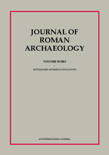
Journal of Roman Archaeology
metrics 2024
Unveiling the Past: Insights into Roman Archaeology
Introduction
Journal of Roman Archaeology is a premier academic journal published by CAMBRIDGE UNIVERSITY PRESS, dedicated to advancing knowledge in the fields of archaeology, classics, and visual arts. With its established reputation since 2005, the journal occupies a significant place in the scholarly community, featured in the Q1 quartile in both Classics and Visual Arts & Performing Arts categories, as well as Q2 and Q3 in Archaeology, reflecting its high impact and relevance. The journal not only presents rigorous research but also fosters interdisciplinary dialogue among researchers, professionals, and students across related fields. Although it does not operate under an open access model, it provides essential insights and critical analyses that contribute to understanding Roman archaeological practices and artifacts. With an ISSN of 1047-7594 and an E-ISSN of 2331-5709, the Journal of Roman Archaeology is an indispensable resource for anyone engaged in the exploration of ancient cultures, heritage preservation, and archaeological methodologies.
Metrics 2024
 0.20
0.20 0.70
0.70 0.40
0.40 28
28Metrics History
Rank 2024
Scopus
JCI (Web Of Science)
Quartile History
Similar Journals
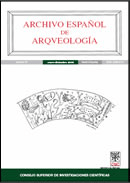
Archivo Espanol de Arqueologia
Unveiling the past with rigorous research and innovative methodologies.Archivo Español de Arqueología is a prestigious journal published by the Consejo Superior de Investigaciones Científicas (CSIC), dedicated to the field of archaeology and the historical sciences. Since its transition to Open Access in 1991, this journal has been a significant resource for scholars and practitioners in Spain and beyond, ensuring the dissemination of high-quality research to a broad audience. With an impressive Scopus ranking that places it within the top 20% of journals in the disciplines of History and Archaeology, Archivo Español de Arqueología plays a crucial role in advancing academic discourse and promoting innovative archaeological methodologies. The journal has maintained rigorous standards, reflected in its placement within the Q2 and Q3 quartiles, enabling it to establish a reputation for excellence and reliability in archaeological scholarship. Researchers, professionals, and students are encouraged to explore the journal's diverse array of articles from its foundation year of 2009 to the present, enriching their understanding of the past through the latest findings and theoretical advancements in archaeology.

Lanx-Journal of the Scuola di Specializzazione in Archeologia of the University of Milan
Advancing archaeological scholarship for a global audience.Lanx-Journal of the Scuola di Specializzazione in Archeologia of the University of Milan, published by Milano University Press, is a distinguished platform dedicated to the field of archaeology. Committed to advancing archaeological research and scholarship, this Open Access journal has been available to the global academic community since 2008, facilitating easy dissemination of innovative ideas and findings. With a strong emphasis on promoting interdisciplinary dialogue, the journal covers a wide range of topics from classical archaeology to contemporary practices, making it an invaluable resource for researchers, professionals, and students in the field. Situated in the historic city of Milan, it aims to contribute to the preservation and understanding of cultural heritage through rigorous academic inquiry and collaboration.

ARCHAEOLOGY IN OCEANIA
Uncovering the Rich Tapestry of Oceania's PastARCHAEOLOGY IN OCEANIA, published by Wiley, is a leading journal that delves into the rich and diverse archaeological landscape of the Pacific region. With a commitment to advancing knowledge in anthropology and archaeology, this esteemed publication has been pivotal in shaping scholarly discussions since its inception in 1966. Spanning generations of research, it has seen converged years of publication from 1966 to 1980 and from 2002 to 2024. With an impressive Scopus ranking placing it in the top quartiles across multiple categories - including Q2 in Anthropology and Q1 in Archeology (arts and humanities) - the journal distinguishes itself as a must-read for researchers, professionals, and students alike. Although it operates on a subscription model, its rigorous peer-reviewed articles and comprehensive studies contribute significantly to understanding the past of Oceania, making it an essential resource for those invested in this vibrant field of study.

Veleia
Connecting Scholars to Shape the Future of History and ArtVeleia is a distinguished academic journal published by the Universidad del País Vasco, specifically from the Department of History, Art, and Music. This journal serves as a vital platform for the dissemination of scholarly research in the fields of history and archaeology, with a particular focus on the cultural and historical narratives of the Basque region and beyond. With a commitment to academic rigor, Veleia facilitates the exchange of innovative ideas and methodologies among researchers, professionals, and students alike. Although currently not open access, the journal aims to contribute significantly to its field by promoting interdisciplinary dialogue and fostering a deeper understanding of historical contexts. By publishing high-quality, peer-reviewed articles, Veleia plays a crucial role in advancing the academic discourse surrounding history and the arts in contemporary scholarship.
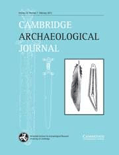
CAMBRIDGE ARCHAEOLOGICAL JOURNAL
Bridging Cultures, Transforming UnderstandingThe Cambridge Archaeological Journal, published by Cambridge University Press, is a premier academic journal dedicated to archaeology and cultural studies. With an ISSN of 0959-7743 and an E-ISSN of 1474-0540, it has established itself as a leading platform since its inception in 1991, showcasing groundbreaking research that significantly contributes to our understanding of human history and cultural heritage. The journal currently ranks in the top quartile (Q1) across various categories, including Archaeology and Cultural Studies, underlining its impact and relevance in the field. The impact factor reflects its esteemed position, with Scopus ranks placing it within the 90th to 93rd percentiles among its peers. Researchers, professionals, and students alike benefit from its insightful analyses and interdisciplinary approaches, making it an essential resource for advancing knowledge in archaeology and related fields. The journal is based in the United Kingdom, at the Edinburgh Building, Shaftesbury Rd, CB2 8RU, Cambridge, England, and continues to drive scholarly conversations through its commitment to excellence and innovation in archaeological studies.
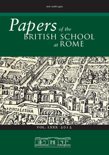
Papers of the British School at Rome
Illuminating the Past: Where Art Meets ArchaeologyPapers of the British School at Rome, published by Cambridge University Press, is a prestigious journal that has been contributing to the fields of archaeology, history, and visual arts since its inception in 1902. With an ISSN of 0068-2462 and an E-ISSN of 2045-239X, this journal serves as an essential platform for innovative research and scholarly dialogue that explores the rich cultural heritage of Rome and its surrounding areas. The journal is ranked in the top quartiles for various categories, including Q1 in Visual Arts and Performing Arts, reflecting its significant impact and relevance in these fields. Despite its non-open access status, the journal boasts a robust readership, comprising researchers, professionals, and students eager to delve into the scholarly discussions it fosters. The Scopus rankings further affirm its reputation, with high percentiles in key areas, marking it as a vital resource for anyone invested in the academic study of classical and contemporary Roman culture. The journal's objective is to promote interdisciplinary research, making it a cornerstone for advancements in art history and archaeological studies.
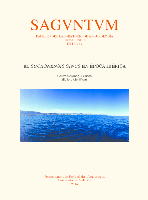
SAGVNTVM-Papeles del Laboratorio de Arqueologia de Valencia
Connecting Scholars and Ideas in the Field of Archaeology.SAGVNTVM-Papeles del Laboratorio de Arqueologia de Valencia is an esteemed open-access journal dedicated to advancing the field of archaeology, published by the Department of Prehistory and Archaeology at the University of Valencia, Spain. With an ISSN of 0210-3729 and an E-ISSN of 2174-517X, the journal has been a vital resource for scholars since its inception in 1962, ensuring that high-quality archaeological research is readily available to the global academic community. Notably, it holds a distinguished Q2 ranking in both Archeology and Archeology within the arts and humanities categories as of 2023, reflecting its commitment to rigorous scholarship and significant contributions to the field. The journals' Scopus rankings further affirm its relevance, positioned at #188 of 413 in Arts and Humanities and #179 of 354 in Social Sciences. Researchers and professionals alike can delve into a variety of topics, benefiting from the journal’s rich archive from 2017 to 2023. With a mission to disseminate knowledge and foster dialogue in archaeology, SAGVNTVM serves as an essential platform for investigators, students, and practitioners interested in the latest archaeological findings and methodologies.
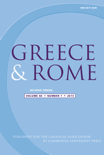
GREECE & ROME
Fostering Dialogue on Ancient WisdomGREECE & ROME, published by Cambridge University Press, is a prestigious journal dedicated to the study of classical antiquity and its enduring influence on contemporary culture. This journal, indexed with ISSN 0017-3835 and E-ISSN 1477-4550, offers a platform for scholarly articles that delve into various aspects of Greek and Roman societies, literature, art, and history. With a rich history that spans from 1931 to 2024, it has consistently maintained an important position in the academic community, achieving a Q2 ranking in Classics and a Q3 ranking in Arts and Humanities as of 2023. Highlighted by a Scopus ranking of #74 out of 170 in Classics, the journal appeals to a diverse audience, including researchers, professionals, and students aspiring to deepen their understanding of the classical world. Although it does not offer open access, GREECE & ROME is committed to the dissemination of critical research and thought-provoking discourse, making significant contributions to the fields and encouraging intellectual exchange across disciplines.

LATOMUS
Fostering Critical Dialogues in the HumanitiesLATOMUS is a distinguished academic journal published by Peeters in Belgium, offering a rich platform for scholarly discourse in the fields of Classics, Archaeology, History, Literature, and Linguistics. With the ISSN 0023-8856 and E-ISSN 2294-4427, it has established itself as an essential resource for researchers and professionals seeking to contribute to and engage with critical debates within these disciplines. While not an Open Access journal, LATOMUS is recognized for its robust impact in the academic community, achieving Q2 and Q3 rankings across various categories, including Classics and Archaeology, according to the latest 2023 evaluations. The journal publishes articles that span a range of topics relevant to antiquity and its influences, making it a vital resource for those exploring historical narratives and linguistic developments. As a publication dedicated to advancing scholarly knowledge since its inception in 1971, LATOMUS continues to serve as a cornerstone of academic inquiry within the humanities, promoting intellectual engagement and disseminating high-quality research in its converged years from 1971 to 1974, 1980, and from 2002 to the present.

Archaeologia Baltica
Illuminating the Past, Shaping the FutureArchaeologia Baltica, published by the Institute of Baltic Region History & Archaeology at Klaipeda University, stands as a premier platform in the field of archaeology, with a specific focus on the Baltic region. This esteemed journal, which boasts a Q1 ranking in both the Arts and Humanities and Archaeology categories as of 2023, serves as a critical resource for scholars, researchers, and students dedicated to the exploration of archaeological horizons. Featuring an array of original research articles, reviews, and theoretical discussions, it aims to advance knowledge and foster dialogue in the diverse fields of archaeology. Though currently not an open-access publication, Archaeologia Baltica enjoys a commendable position in the Scopus rankings, underscoring its importance in shaping contemporary archaeological discourse. The journal not only reflects rigorous academic standards but also invites contributions that encourage collaborative efforts in the study of our shared cultural heritage.